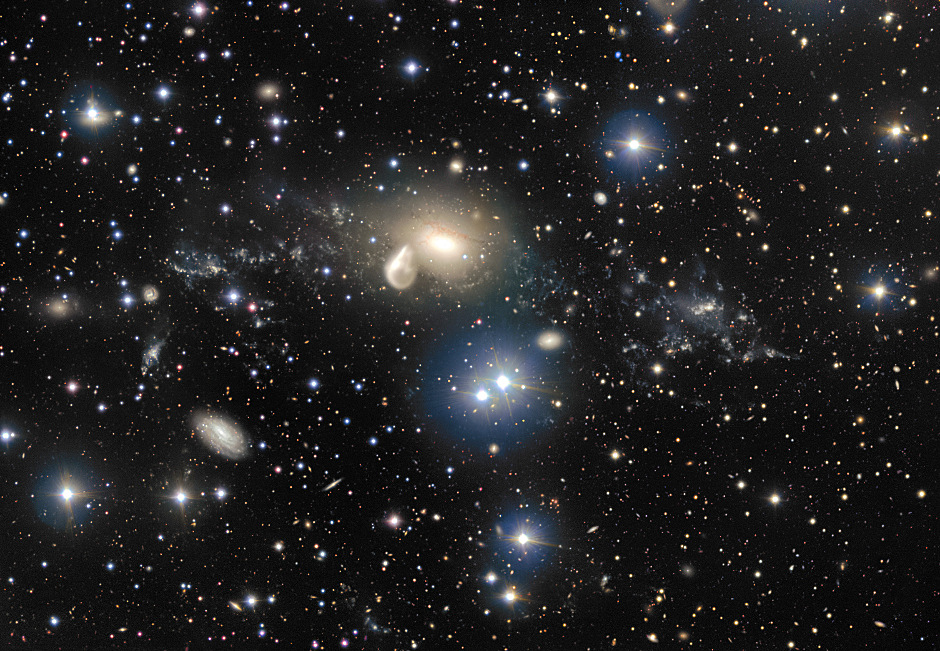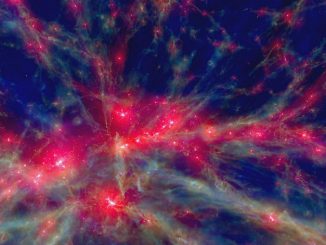
NGC 5291, the hazy, golden oval dominating the centre of this image, is an elliptical galaxy located nearly 200 million light-years away in the constellation of Centaurus (The Centaur). Over 360 million years ago, NGC 5291 was involved in a dramatic and violent collision as another galaxy travelling at immense speeds barrelled into its core. The cosmic crash ejected huge streams of gas into nearby space, which later coalesced into a ring formation around NGC 5291.
Over time, material in this ring gathered and collapsed into dozens of star-forming regions and several dwarf galaxies, revealed as pale blue and white regions scattered around NGC 5291 in this new image from the FORS instrument, mounted on the VLT. The most massive and luminous clump of material, to the right of NGC 5291, is one of these dwarf galaxies and is known as NGC 5291N.
The Milky Way, like all large galaxies, is believed to have formed through the build-up of smaller dwarf galaxies in the early years of the universe. These small galaxies, if they have survived on their own up to the present day, now normally contain many extremely old stars.
Yet NGC 5291N appears to contain no old stars. Detailed observations with the MUSE spectrograph also found that the outer parts of the galaxy had properties typically associated with the formation of new stars, but what was observed is not predicted by current theoretical models. Astronomers suspect that these unusual aspects may be the result of massive collisions of gas in the region.
NGC 5291N doesn’t look like a typical dwarf galaxy, but instead it shares a striking number of similarities with the clumpy structures present within many of the star-forming galaxies in the distant universe. This makes it a unique system in our local universe and an important laboratory for the study of early gas-rich galaxies, which are normally much too distant to be observed in detail by current telescopes.
This unusual system has previously been observed by a wide range of ground-based facilities, including ESO’s 3.6-metre telescope at the La Silla Observatory. However, the capabilities of MUSE, FORS and the Very Large Telescope have only now allowed some of the history and properties of NGC 5291N to be determined.
Future observations, including those by ESO’s European Extremely Large Telescope (E-ELT), may allow astronomers to further unravel this dwarf galaxy’s remaining mysteries.



